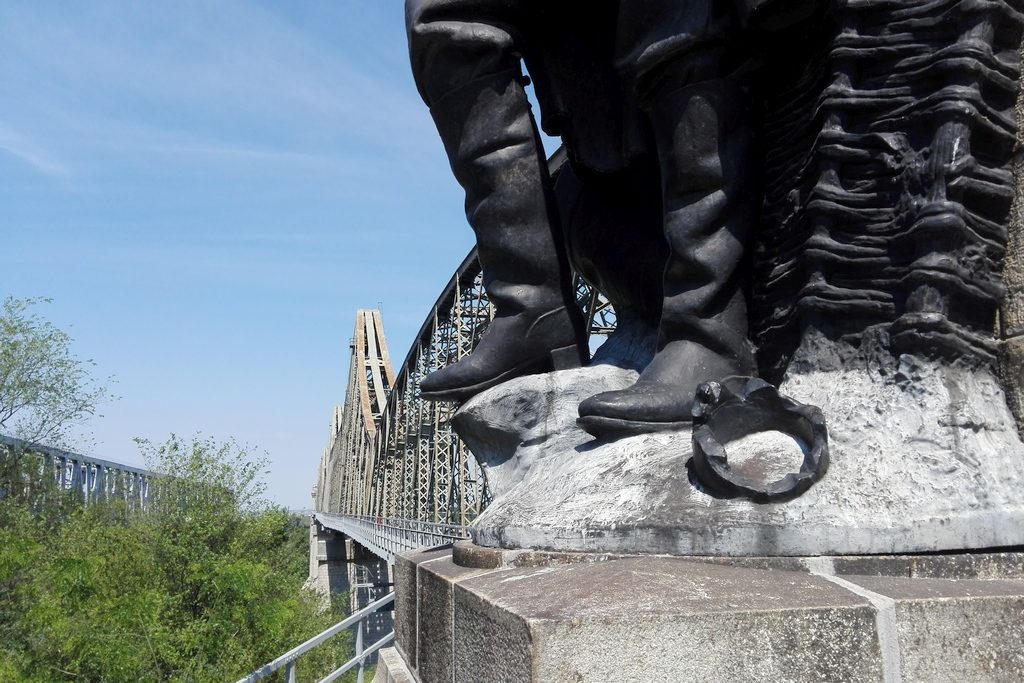

King Carol the Ist Bridge (later renamed Anghel Saligny Bridge, to honor Anghel Saligny, the designer and contractor of the bridge) was built between 1890 and 1895 to ensure the rail link between Bucharest and Constanta.
The first section of the rail to the Black Sea beach was between Cernavoda and Constanta, conducted in 1860, before Dobrogea being ceded to Romania. After the war of independence and annexation of Dobrogea, has begun in 1879 the construction of Ciulniţa Bucharest-Fetesti section. The rail link between Fetesti and Cernavoda has a length of 21 km and includes the bridges over Borcea and Danube. The construction work took place on November 26, 1890 in the presence of King Carol I. Design and execution team was led by engineer Anghel Saligny. The entire rail including the bridges, were executed with one simple route.
The 4087.95 meters of bridges with access ramps, were forming at that time, the longest complex of bridges built in Romania and the third longest in the world. Central opening of 190 m was the largest in the continental Europe.
The total cost of the rail section Fetești-Cernavodă, including the rails and stations were of 35 million lei in gold.
At the end of the bridge of Cernavoda, in the memory of heroes who fell in the War of Independence, was a erected an impressive monument of bronze, representing two infantry. The infantry and the emblems were made by French sculptor Léon Pilet (1836-1916), part of their value being supported by the French Embassy in Bucharest, as a gift in honor of King Carol I. Pilet performed first five different thumbnail, and the king himself chose the model that was developed on the bridge. The statues were cast in three pieces in Lyon and after that they were merged on spot. The infantry on the northern side bears the author’s signature, along with achieving year (1895).
The biggest complex of bridges for Europe of that times and the third longest in the world was inaugurated after 5 years, on 15/26 September 1895. Building the bridge at Cernavoda meant expanding the construction of large proportions, of two news from the technical point of view: use of cast steel (soft) instead of puddled and beams system with lattices in the console (Gerber beam), very advantageous economically and resistance of materials for structures with large spans.
After hammering in the last rivet, a silver rivet, document inauguration was blocked in and was celebrated the religious service. In the same time, Anghel Saligny stood by the workers team heads who had worked on the execution of the bridge, in a boat under the bridge and this was to ensure the strength of the bridge.
Because of the outbreak of the World War, the Romanian troops, retreating, were ordered to destroy one of the two bridges in October of 1916. The bridge across the Danube has undergone some damages trying to destroy it, but it was rebuilt by the Company Maschinefabrik Augsburg – Nurnberg (MAN), from Germany. Instead, the bridge over Borcea was destroyed, and the authorities were obliged to execute a new assembly, which was mounted on pillars remained intact, to restore full movement over the bridge.
